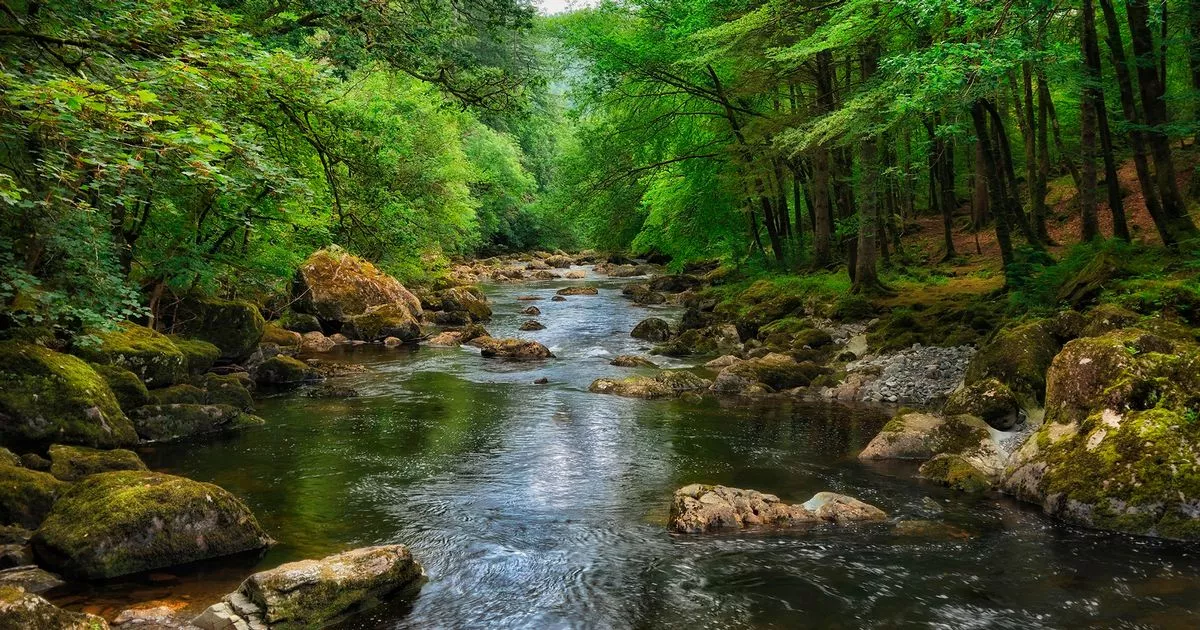By Andrew Forgrave
Copyright dailypost

Sewage is pouring into rivers in Eryri at twice the rate of that outside the national park. Figures have been released by campaigners amid anecdotal evidence Eryri is also the UK’s most littered tourist attraction.
Eryri was ranked alongside Dartmoor, the Broads and the South Downs as the parks worst affected by sewage overflows. The Campaign for National Parks (CNP) described the situation as “outrageous”, arguing that rivers and lakes in designated landscapes should be the cleanest in the country.
Figures released by the group showed each sewer overflow in Eryri discharges an average 638 hours per year. In Bannau Brycheiniog the number was 489 hours and Pembrokeshire Coast National Park it was 420 hours. According to CNP, the average figure outside National Parks in England and Wales is 266 hours.
A report by CNP and the Rivers Trust also found that 48% of the rivers in Wales’ national parks failed to meet the good ecological status required by law. This was slightly below England’s average. Slurry and fertiliser run-off were blamed, along with toxic pesticides
CNP chief executive Dr Rose O’Neill said: “National Parks should set the gold standard for clean and healthy rivers, but instead they are being ignored and neglected by Government, regulators and water companies. These are rivers loved by millions of people: if we can’t protect the jewels of our waterways, then we are failing the nation.”
In 2024, a total of 47,187 hours of sewage were discharged from combined sewage overflows (CSO) into Eryri’s rivers, according to CNP. This was more than twice the figure for Bannau Brycheiniog (22,482 hours) and more than three times the discharge hours in Pembrokeshire Coast (15,957 hours). Eryri is the largest of the country’s national parks.
Dr O’Neill claimed the ongoing discharges reflected an aging and poorly maintained sewage infrastructure. In national parks, the system is ill-designed and undersized to cope with both residents and visitors, she said. Join the North Wales Live Whatsapp community now
Calling on the Welsh Government to bulk up the legal protections in national parks, Dr O’Neill added: “Government in Wales is in the midst of the biggest reform of the water sector in decades: they must not forget places like our National Parks. It’s time to give these waterways the strongest legal protections, the highest standards, and the urgent investment they deserve.”
In the last financial year, Dŵr Cymru Welsh Water invested a record £629m in its network, up 31% year-on-year. Projects included increasing capacity at Bangor’s Beach Road wastewater pumping station. In Eryri, it built the UK’s largest spillway at Llyn Celyn dam. This year, the company has faced some of the most difficult operational incidents it has faced in “decades” – including major pipe bursts in Conwy and Flintshire.
Working with others, Dŵr Cymru said 231km of Special Areas of Conservation rivers were improved in 2024-25. To fund further gains, average household bills for 2025-26 were hiked by 27% in February.
Standard sewage treatment technologies are often absent in sparsely populated rural areas, said CNP. Yet designated Landscapes – which cover 25% of Wales – often supply water to towns and cities.
Andrew Blake, Chair of Tirweddau Cymru (Landscapes Wales) welcomed calls to prioritise national parks for water network upgrades. He said: “Under-investment in sewage treatment is a significant issue in rural areas. In many cases, designated landscapes are also impacted by activity in the wider river catchments upstream and outside of their boundary.”
He stressed the work being done by national park teams to improve these wider catchments, citing what’s happening on Afon Cleddau. Although much of the river’s catchment lies outside the Pembrokeshire Coast National Park, it’s working with farmers and landowners to improve its condition.
What Dŵr Cymru said
“The Campaign for National Parks water report notes that rivers in Welsh national parks are in a better ecological status than those in England.
“As a country on the western side of the UK, we have some of the highest levels of rainfall and are seeing an increase in severe events linked to climate change. Wales also has some of the oldest housing stock in the UK meaning there is more ‘combined’ sewers than in other areas – so all roof and home drainage goes into what is usually a small sewer network with a small storm overflow pipe.
“Storm overflows are essential to ensure networks do not become overwhelmed and flood properties. The total removal of storm overflows is unaffordable and would take decades, so we are targeting this investment on those having the greatest environmental impact.
“We are determined to play our part to improve river and bathing water quality and over the next five years we’ll invest £2.5bn on projects to improve the environment, including £889m on improving storm overflows. River pollution and marine water quality is not just an issue for water companies. We need to work together with other sectors who impact water quality to ensure improvement.”
‘Slush cups and dog mess’
Meanwhile, analysis of TripAdvisor review data suggests Eryri has an ongoing issue with litter too. A study by BusinessWaste.co.uk found the national park was the UK’s most littered tourist attraction.
Eryri, which attracts more than four million visitors each year, has amassed 2,803 TripAdvisor reviews. Of these, 1.03% mentioned litter, typically slush cups and dog mess. Volunteers, climbers and rangers work tirelessly to remove dropped and discarded items.
Next most littered attraction was Blackpool’s Pleasure Beach Resort, with 0.69% of reviews complaining of litter such as cigarette ends and chewing gum.
In third place (0.66%) was Ben Nevis, the UK’s highest mountain. Others included Adventure Island in Southend (4th), Alton Towers in Staffordshire (5th) and Chester Zoo (6th). Sign up for the North Wales Live newsletter sent twice daily to your inbox
Find the weather forecast where you live



